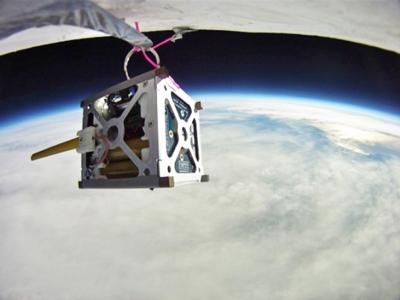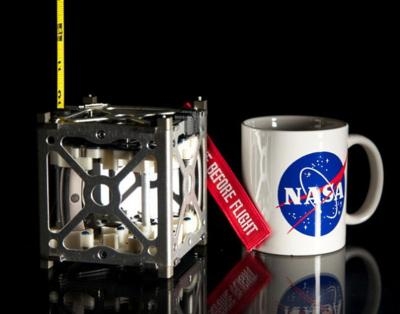Wed, Apr 24, 2013
'PhoneSats' May Be The Lowest-Cost Satellites Ever Placed In Orbit
Three smartphones destined to become low-cost satellites rode to space Sunday aboard the maiden flight of Orbital Science Corp.'s Antares rocket from NASA's Wallops Island Flight Facility in Virginia. The trio of "PhoneSats" is operating in orbit, and may prove to be the lowest-cost satellites ever flown in space. The goal of NASA's PhoneSat mission is to determine whether a consumer-grade smartphone can be used as the main flight avionics of a capable, yet very inexpensive, satellite.

Transmissions from all three PhoneSats have been received at multiple ground stations on Earth, indicating they are operating normally. The PhoneSat team at the Ames Research Center in Moffett Field, CA, will continue to monitor the satellites in the coming days. The satellites are expected to remain in orbit for as long as two weeks.
"It's always great to see a space technology mission make it to orbit -- the high frontier is the ultimate testing ground for new and innovative space technologies of the future," said Michael Gazarik, NASA's associate administrator for space technology in Washington.
"Smartphones offer a wealth of potential capabilities for flying small, low-cost, powerful satellites for atmospheric or Earth science, communications, or other space-born applications. They also may open space to a whole new generation of commercial, academic and citizen-space users."

Satellites consisting mainly of the smartphones will send information about their health via radio back to Earth in an effort to demonstrate they can work as satellites in space. The spacecraft also will attempt to take pictures of Earth using their cameras. Amateur radio operators around the world can participate in the mission by monitoring transmissions and retrieving image data from the three satellites. Large images will be transmitted in small chunks and will be reconstructed through a distributed ground station network.
(Images provided by NASA. Top image taken during high-altitude balloon testing.)
More News
Also: Netherlands Donates 18 F16s, 2 737s Collide On Ramp, E-7 Wedgetail Cut, AgEagle's 100th In S Korea The Pilot and Aircraft Privacy Act was introduced in the House by Represent>[...]
Pilot Also Reported That Due To A Fuel Leak, The Auxiliary Fuel Tanks Were Not Used On June 4, 2025, at 13:41 eastern daylight time, a Piper PA-23, N2109P, was substantially damage>[...]
Have A Story That NEEDS To Be Featured On Aero-News? Here’s How To Submit A Story To Our Team Some of the greatest new stories ANN has ever covered have been submitted by our>[...]
From 2023 (YouTube Edition): Reflections on War’s Collective Lessons and Cyclical Nature The exigencies of war ought be colorblind. Inane social-constructs the likes of racis>[...]
What Goes Around, May Yet Come Back Around, Klyde FMI: www.klydemorris.com>[...]
 Airborne 06.30.25: US v ADS-B Misuse, Natl STOL Fire, Volocopter Resumes
Airborne 06.30.25: US v ADS-B Misuse, Natl STOL Fire, Volocopter Resumes NTSB Prelim: Piper PA-23
NTSB Prelim: Piper PA-23 ANN FAQ: Submit a News Story!
ANN FAQ: Submit a News Story! Classic Aero-TV: One Mans Vietnam
Classic Aero-TV: One Mans Vietnam Klyde Morris (06.30.25)
Klyde Morris (06.30.25)




